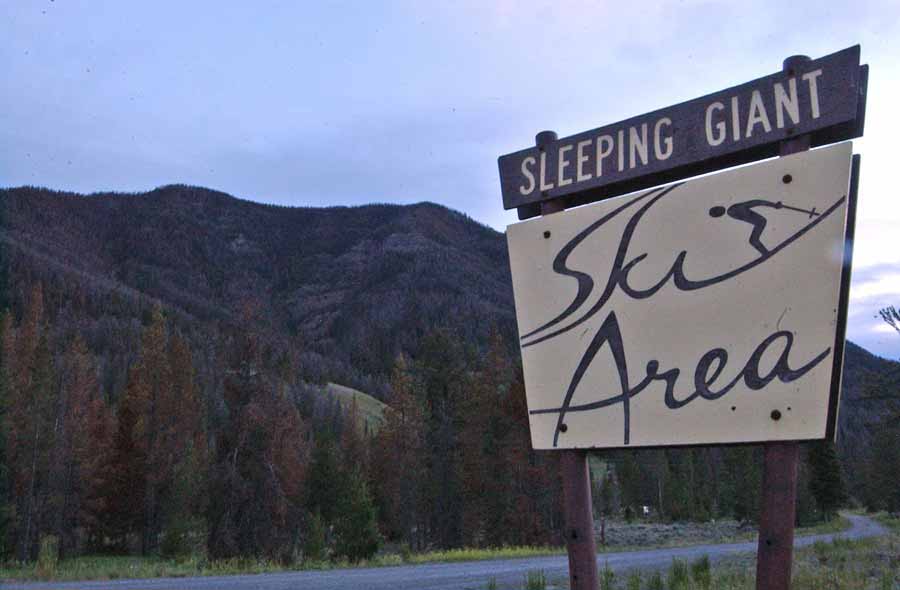 Shoshone National Forest managers have approved construction of a zip line at the Sleeping Giant Ski Area east of Yellowstone National Park. (Ruffin Prevost/Yellowstone Gate – click to enlarge)
Shoshone National Forest managers have approved construction of a zip line at the Sleeping Giant Ski Area east of Yellowstone National Park. (Ruffin Prevost/Yellowstone Gate – click to enlarge)
By Ruffin Prevost
CODY, WYO. — The U.S. Forest Service has approved a plan by a nonprofit group to build a zip line in the Shoshone National Forest just east of Yellowstone National Park.
A decision notice issued Friday and signed by forest Supervisor Joe Alexander gives the go-ahead for the Yellowstone Recreation Foundation to construct a zip line made up of eight towers that suspend the line as it moves across approximately 19 acres, according to planning documents.
The Foundation owns and operates the historic Sleeping Giant Ski Area, a small, family-oriented ski hill located less than five miles from Yellowstone’s East Gate. The group is hoping a zip line — a cable suspended above the forest floor that riders glide along on a harness and pulley — will bring additional summer revenue to help Sleeping Giant’s financially struggling ski operations.
Also approved as part of the plan is the addition a small area on the west side of the ski hill for winter sledders and tubers. The tubing hill would require expanded snowmaking and installation of a rope tow.
Opponents have said that winter use of the ski area when bears are hibernating may be fine, but expanding summer use could cause bear-human conflicts or deprive bears of important habitat. Foundation members say the project will have a minimal footprint, and they hope the zip line will raise enough money to make the ski area financially sustainable over the long term.
Cody City Council member Stan Wolz was among many local residents who made public comments in support of the plan. He said Friday that he was pleased to hear the project was approved.
“I’m all for anything that makes this group or others like it more financially self-sustaining,” Wolz said.
He said that public and private funding for Sleeping Giant is limited, and is likely to shrink in the future, so additional revenues will be needed to keep operations going.
Leslie Patten, who lives in Sunlight Basin and writes frequently about the outdoors, said she understood the need for financial sustainability. But she wasn’t convinced that a zip line was the answer.
Tourists using the zip line are unlikely to be well-versed in bear safety, she said, and the attraction will be located in an area with one of the highest concentrations of grizzlies in the U.S. outside of Alaska.
“You’re adding a lot of people in an area where there are supposed to be a lot of bears,” Patten said. “Why would you do that if it might endanger the bears or the people?”
A 102-page environmental assessment by the Forest Service issued last summer states that there were 74 grizzly-human conflicts recorded in the front country along the North Fork Valley over the past 11 years. Most of those were in developed areas, and many were related to improper food storage or involved previously food-conditioned bears that had conflicts at other sites.
Most grizzlies in the area rely on natural food sources during the spring, and have adapted to human presence by avoiding landscapes around developed areas except at night and around sunrise and sunset, the report states.
The Foundation is working to revitalize winter recreation along the North Fork Valley between Cody, Wyo. and Yellowstone Park, focusing on downhill and cross-country skiing, snowmobiling and ice hockey in Cody.
Initial cost estimates for the zip line are around $500,000, and the foundation would likely require an extensive fundraising effort before starting work on the project.
The decision is is subject to appeal, which must be submitted within 45 days.
Contact Ruffin Prevost at 307-213-9818 or [email protected].

Wonderful news! Congratulations to Sleeping Giant! This will be a great low-impact addition to the North Fork valley.